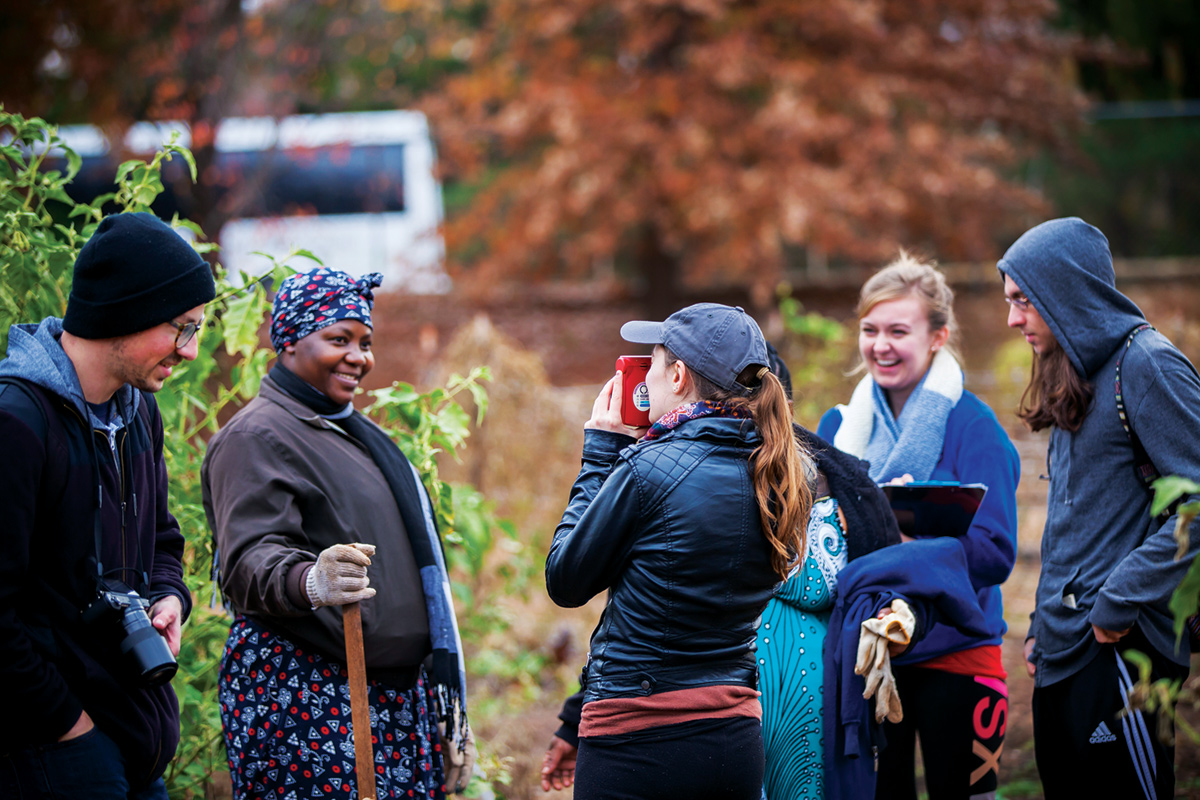In Class: Turning Art into Action

Kay Hinton
Course Title
ARTVIS 333: Multidiscipline Design Studio
Course Description
In this class, students work with selected Atlanta-area artists to plan, research, develop, and produce an art project highlighting the mission of a local nonprofit working in human services, the environment, or arts and culture. Cotaught by Carlton Mackey, assistant director of the Ethics and Servant Leadership (EASL) program and director of the Ethics and the Arts program at Emory’s Center for Ethics, and Edward Queen, director of EASL, class sessions unpack and examine the role of art in social change. Initially funded by a grant from Southwest Airlines, Mackey developed the class as a way to engage students in work that challenges them “to use their work to influence the issues that plague our society.” Last semester, the class worked with nonprofits Global Growers, the Alliance Theatre, and Emory’s Urban Health Initiative. The artists for the semester were photographer Ross Oscar Knight and filmmakers Laura Asherman 10OX 12C and William Feagins.
Today's Class
In a discussion class examining W. E. B. DuBois’s 1926 lecture before the NAACP, Queen challenges students to explore how the perspectives they bring to their work can influence its messages.
Quotes to Note
“We are in the height of the intersection of media and activism. Social media and activism led to a literal revolution in the Middle East. The role of an artist and an activist is to translate the longing of the hearts of the people, and that is what we hope our students and artists are able to do, to make that translation and to make it universal. Even if it is not your story or experience, you are able to identify and align with it.”—Carlton Mackey
Students Say
“I am really interested in this concept for environmental science. There is a big gap between scientists and making change happen through policy and community action. It is difficult for people to understand biodiversity and climate change, and I am interested in the concept of using art as a medium to inspire social change especially through environmental action.”—Aspen Ono, junior environmental science and international studies major
“True art, good art, sends a message. That is relevant to what we are doing because art as social activism always has to send a message. Bringing awareness to something is the first step, then you can go on to influence people to take part in the change you are trying to achieve.”—Sarah Loftus, junior media studies and sociology major


